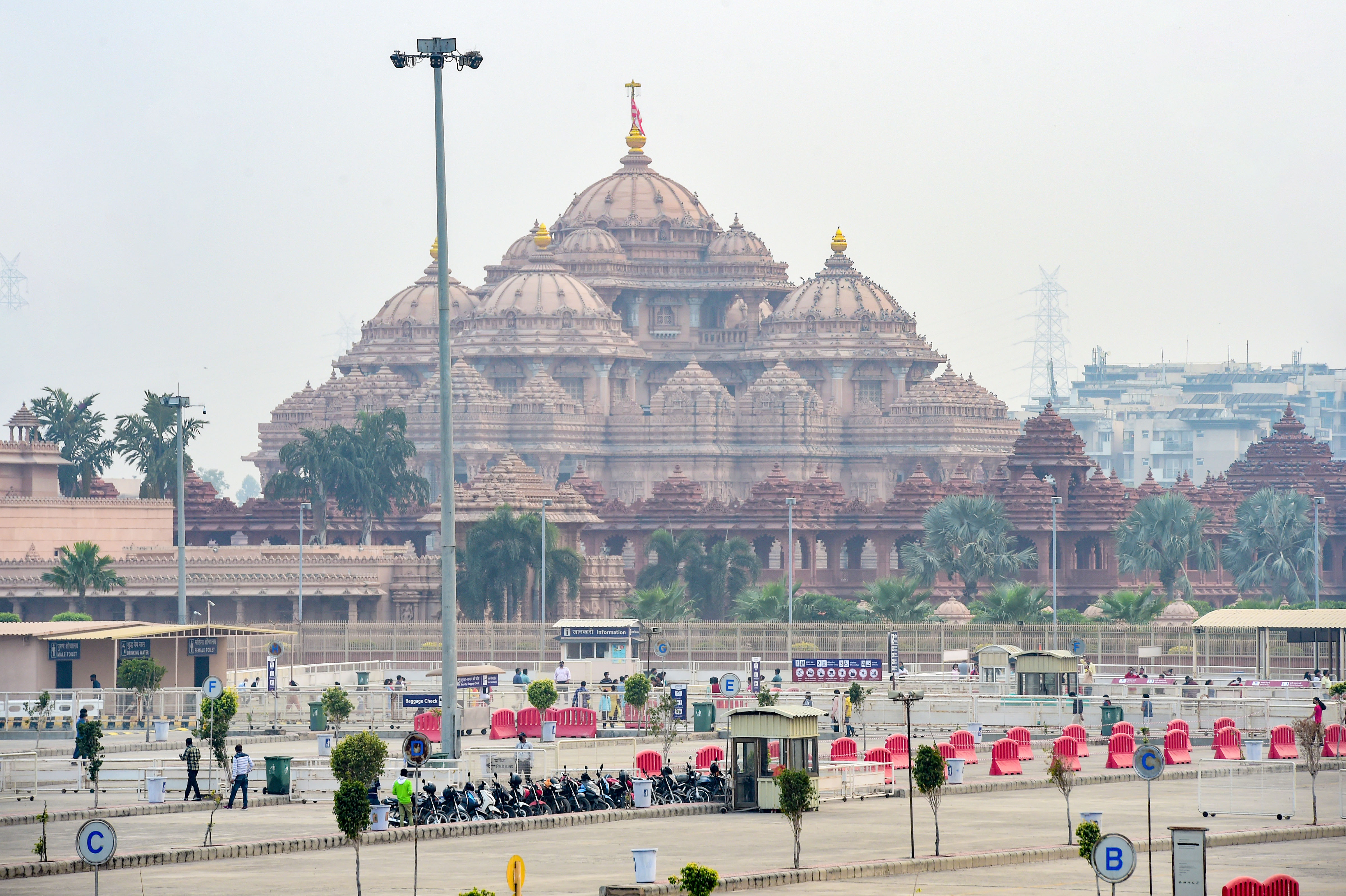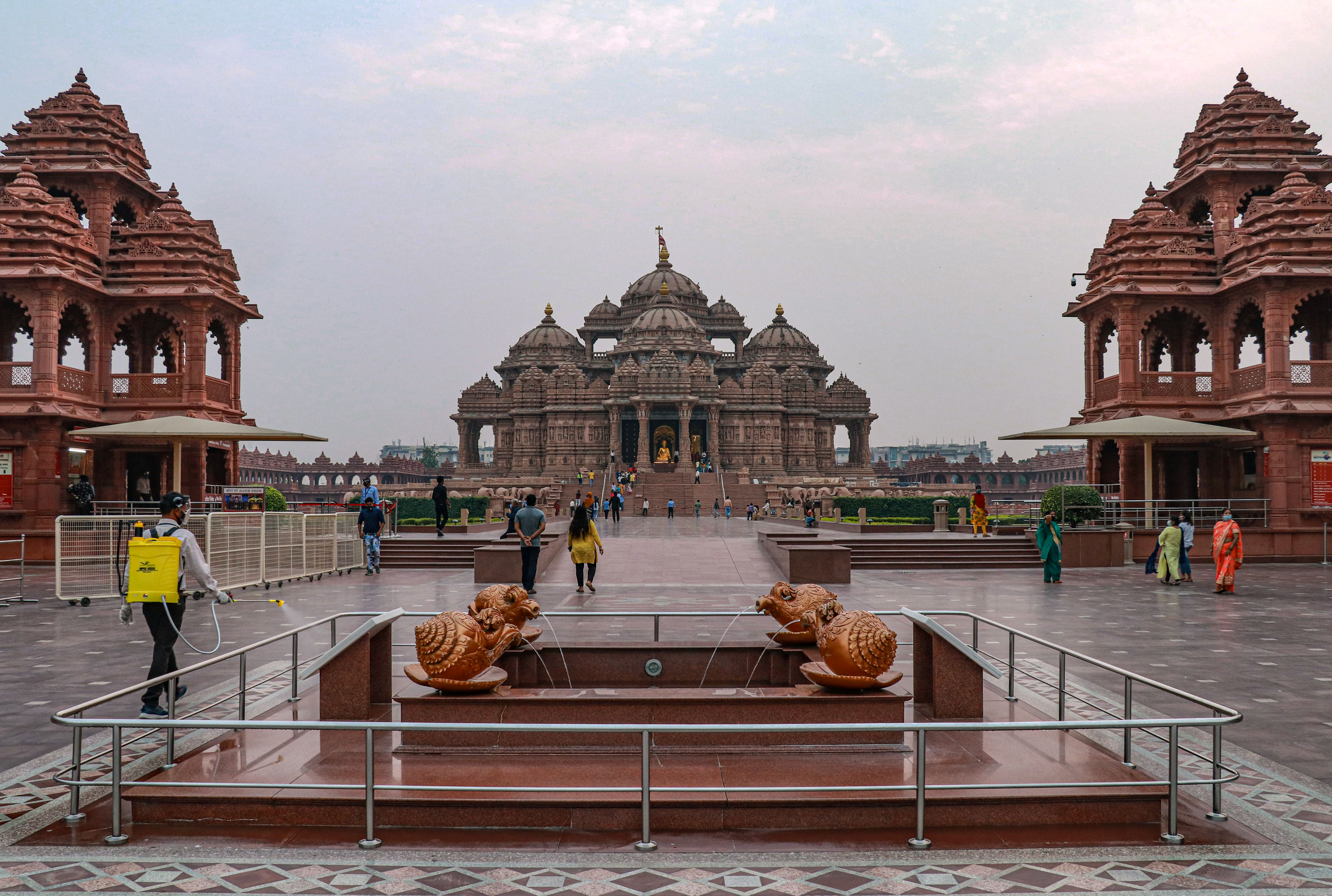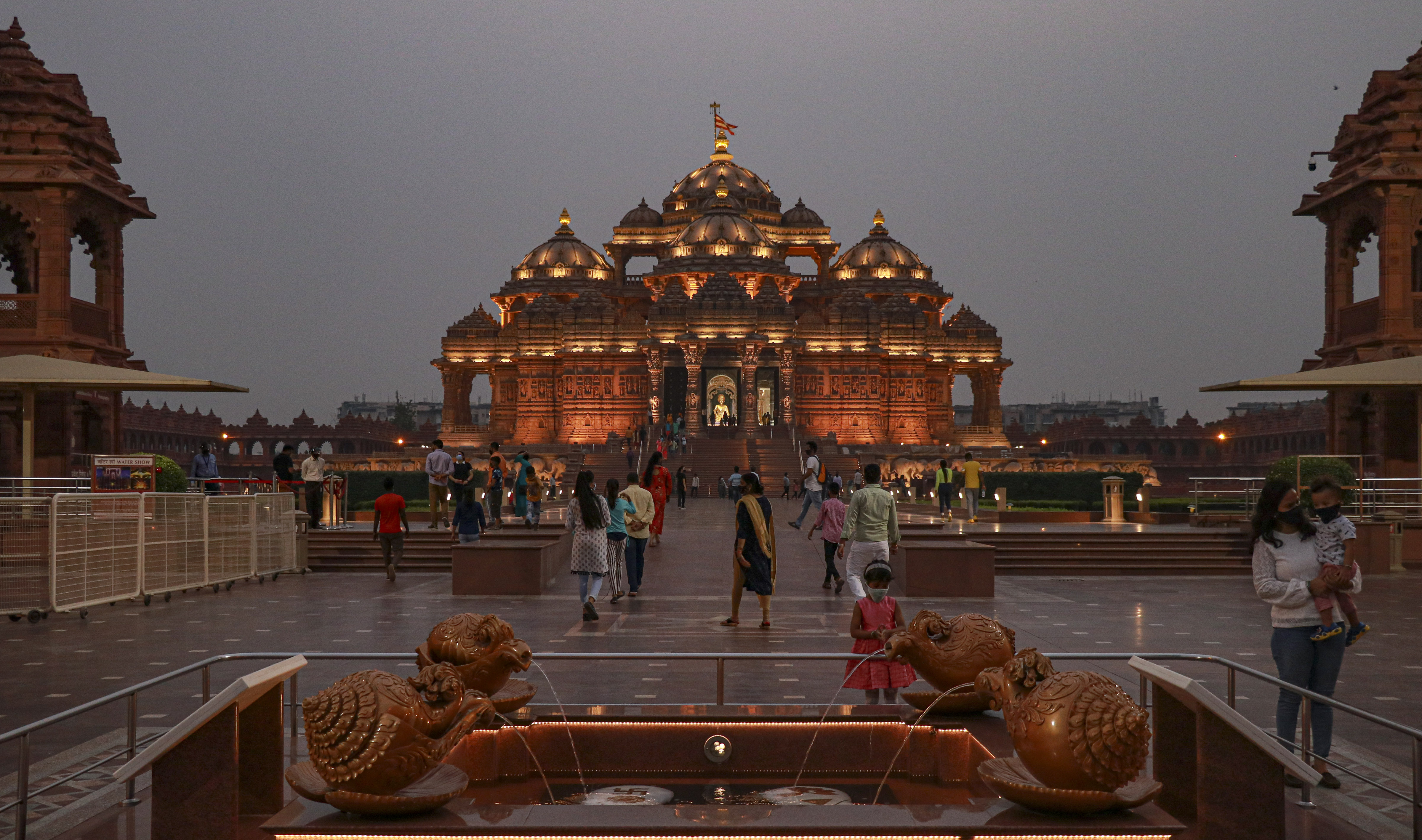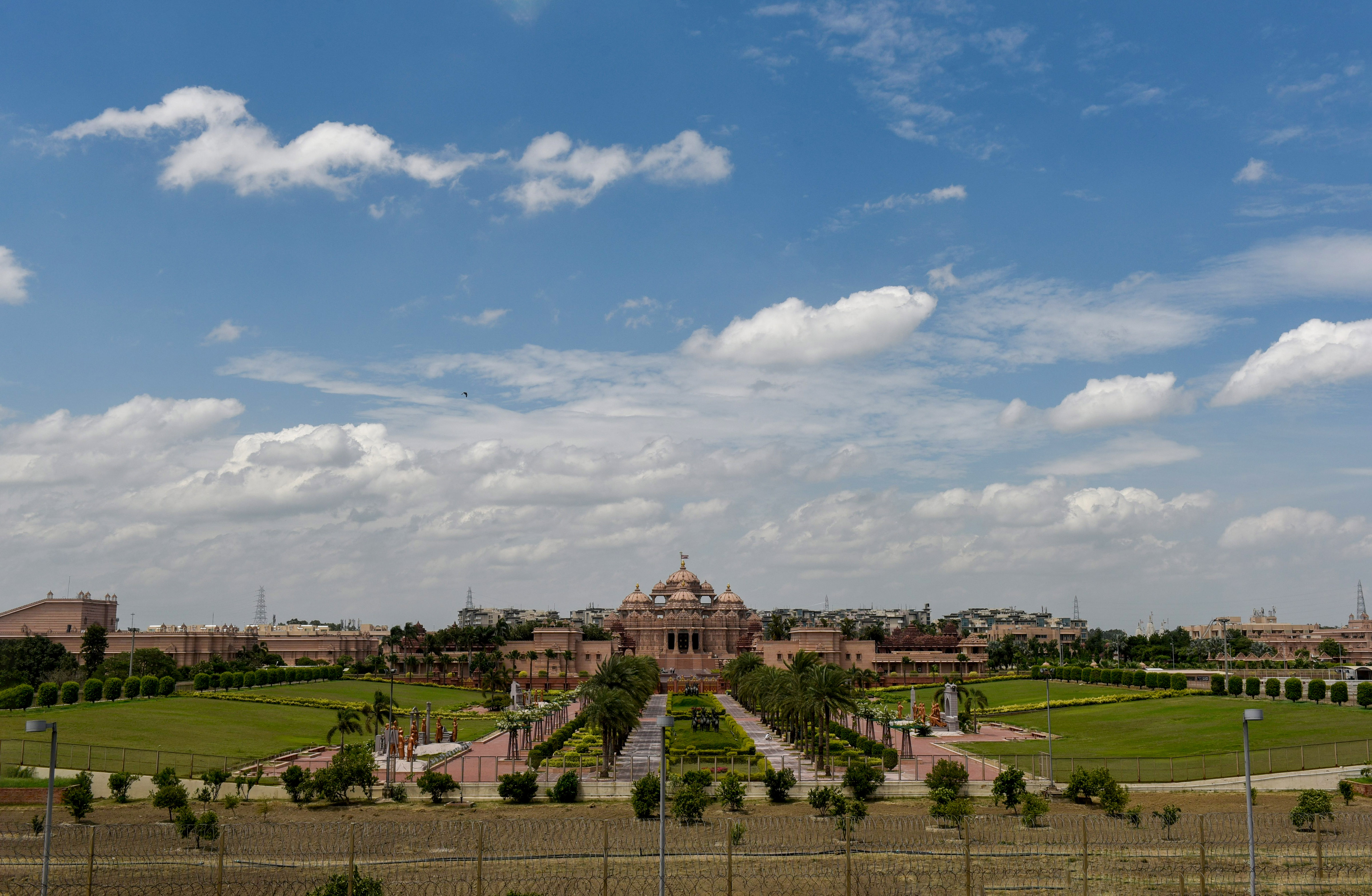


AKSHARDHAM TEMPLE
Swaminarayan Akshardham Temple, also known as Akshardham, is one of the most important social, religious and cultural places of Delhi. BAPS has constructed the temple. It is inspired by Yogiji Maharaj and is created by Pramukh Swami Maharaj.
Officially opened on 6th November 2005, by then President of India Dr. A P J Abdul Kalam, the Akshardham Temple attracts at least 70 percent of the tourists coming to the city. Akshardham Temple, Delhi, is the successor of Akshardham Temple, Gandhinagar, Gujarat and is built according to Vastu Shastra and Panchatantra Shastra.
The main shrine of the temple is the
central point and is the main attraction of the temple. There are various
exhibition halls created in the complex that displays an excellent sense of
design and technology.
Some of the noticeable features of the Akshardham temple complex include Sahaj Anand water show, an Abhisheka Mandap, a thematic garden and three exhibitions namely Sahajanand Darshan (Hall of Values), Neelkanth Darshan (an IMAX film on the early life of Swaminarayan as the teenage yogi, Neelkanth, and Sanskruti Darshan (a cultural boat ride).
The main attraction of the
Swaminarayan Akshardham complex is the Akshardham Mandir. It rises 141-foot (43 m)
high, spans 316-foot (96 m) wide, and extends 356-foot (109 m) long. It is intricately carved with flora, fauna, dancers, musicians, and deities.
Designed in
accordance with the standards of Maharishi Vastu Architecture, it features a blend of architectural styles across India. It is entirely constructed from Rajasthani pink sandstone and Italian Carrara
marble. Based on traditional Hindu architectural guidelines (Shilpa
shastras) on maximum temple life span, it makes no use of ferrous metal.
Thus, it has no support from steel or concrete.
The mandir also consists of 234 ornately
carved pillars, nine domes, and 20,000 statues
(murtis) of swamis, devotees, and acharyas. The mandir also features the Gajendra
Pith at its base, a plinth paying tribute to the elephant for its importance in Hindu culture
and India's history. It contains 148 life sized elephants in total weighing a
total of 3000 tons.
Sahajanand
Darshan (Hall of Values)
The Hall of
Values features lifelike robotics and dioramas which display incidents from Swaminarayan's
life, portraying his message about the importance of peace, harmony, humility,
service to others and devotion to God. Set in 18th century India, the audience
experiences eternal messages gleaned from ancient Hindu culture such as non‐violence, vegetarianism, perseverance, prayers, morality, and family harmony through
15 3-D dioramas which make use of state of the art robotics, fibre optics,
light and sound effects, dialogues, and music. The hall also features the world's
smallest animatronics robot in the form of Ghanshyam
Maharaj, the child form of Swaminarayan.
Nilkanth Darshan
The theatre
houses Delhi's first and only large format screen, measuring 85-foot
(26 m) by 65-foot (20 m). The theatre shows a 40-minute film
specially commissioned for the complex, Neelkanth
Yatra, to recount a seven-year pilgrimage made by Swaminarayan made during
his teenage years throughout India. Mystic India, an international version of the film produced by BAPS Charities, was released in 2005 at IMAX theatres and giant screen
cinemas worldwide. A 27-foot
(8.2 m) tall bronze murti of Neelkanth Varni is located outside the theatre
Sanskruti Vihar
[Boat Ride]
The Boat Ride is a 12-minute journey through 10,000 years glorious heritage, using life size figures and robotics to depict life in Vedic India, from family life to bazaars and teaching. It also shows the contributions of Vedic Indians to various fields such as science, astronomy, arts, literature, yoga, mathematics, etc. by eminent persons like mathematician-astronomers Aryabhata and Brahmagupta, grammarian Pāṇini, contributors to the ancient art and science of Ayurveda like Sushruta and Charaka, Classical Sanskrit writer Kālidāsa, philosopher, economist and royal advisor Chanakya, among others. It shows the world's first university, Takshashila and the subjects taught there such as horse riding and warfare. It moves on to the Middle Ages to Sufi saints like Kabir and saints from the Bhakti movement such as Meera and Ramananda and then to recent times highlighting the contributions of modern Indian mathematicians such as Jagadish Chandra Bose, Srinivasa Ramanujan, C. V. Raman and Satyendra Nath Bose and philosophers like Swami Vivekananda.
Musical fountain
Musical
fountain, also known as the Yagnapurush Kund, is India's largest step well. It
features a very large series of steps down to a traditional 'yagna kund'.
During the day, these steps provide rest for the visitors to the complex and at
night, a musical fountain show named Sahaj Anand - Multi-Media Water Show is
shown. Sahaj Anand Water Show is a breathtaking 24-minute presentation which
unites a variety of intriguing media to bring to life a story from the Kena
Upanishad. Multi-color lasers, video projections, underwater flames, water jets
and surround sound in symphony with lights and live actors produce a
captivating and inspiring presentation. International experts contributed their
expertise with BAPS volunteers and swamis to produce this one-of-a-kind
presentation. The fountain is
named after the founder of the Hindu organization BAPS, Shastriji
Maharaj. The fountain
measures 300 feet (91 m) by 300 feet (91 m) with 2,870 steps and 108
small shrines. In its centre lies an eight-petaled lotus-shaped yagna kund
designed according to the Jayaakhya Samhita of the Pancharatra shastra.
Garden of India
Also known as
the Bharat Upavan, this garden has lush manicured lawns, trees, and shrubs. The
garden is lined with bronze sculptures of contributors to India's culture and
history. These sculptures include children, women, national figures, freedom
fighters, and warriors of India, including notable figures such as Mahatma Gandhi.
Travel
The complex
is accessible by Delhi Metro. The Akshardham Metro Station is proximate to the complex.









